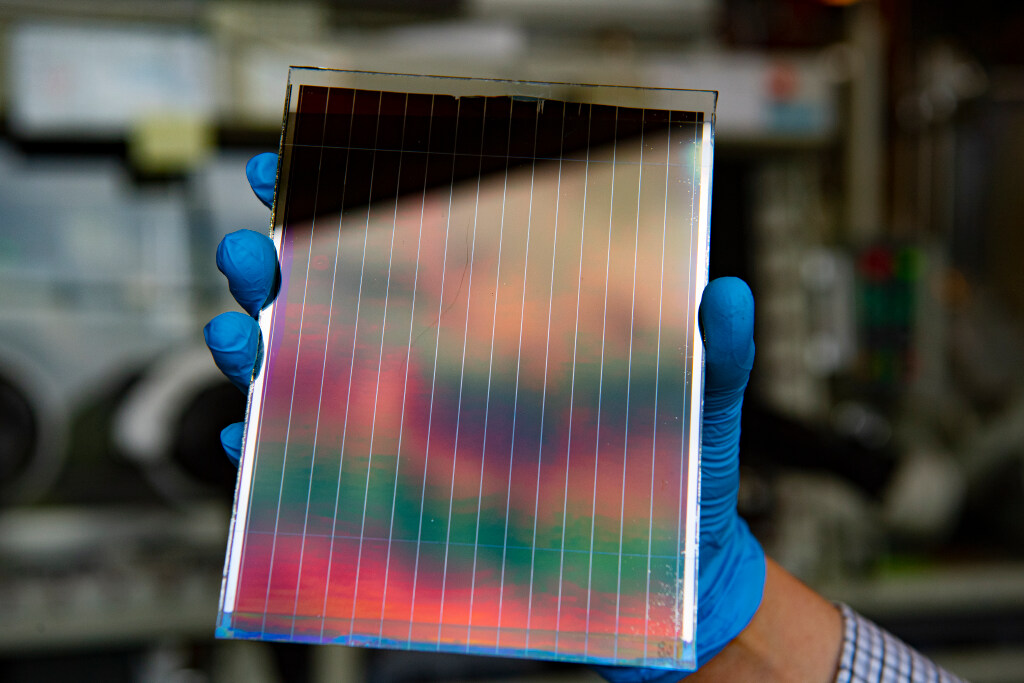Image source: renewableenergyworld
The quest for more efficient and affordable solar energy has led to remarkable breakthroughs in recent years, with perovskite solar cells emerging as a transformative technology. Named after the mineral perovskite, these cells have rapidly gained attention for their exceptional ability to convert sunlight into electricity. Offering a unique combination of high efficiency, low production costs, and versatility, perovskite solar cells are poised to revolutionize the solar industry. As researchers continue to refine this technology, perovskites may soon challenge traditional silicon-based solar cells, ushering in a new era of renewable energy.
Understanding Perovskite Solar Cells
A perovskite solar cell is a cutting-edge type of thin-film solar cell that has captured the imagination of scientists and engineers alike. Composed of materials known as perovskites, these cells stand out for their unique crystallographic structure, which allows them to convert sunlight into electricity with remarkable efficiency. Unlike the bulky silicon wafers used in conventional solar panels, perovskites offer a lighter, more flexible alternative with the potential to revolutionize the solar industry. Their promise lies not only in their high efficiency but also in their lower production costs, paving the way for a future where they could surpass and potentially replace traditional silicon-based solar panels altogether.
Mechanism of Perovskite Solar Cells
Perovskite solar cells operate similarly to traditional solar panels. They utilize a semiconductor material with a crystal structure resembling calcium titanium oxide, known as perovskite. When exposed to sunlight, this semiconductor absorbs energy, generating a flow of electrons. These electrons are then captured by wiring within the cell and converted into usable electricity.
Advantages of Perovskite Solar Cells
Perovskite solar cells show immense promise due to their high efficiency potential. According to lab studies, these cells could surpass the efficiency of traditional silicon cells, reaching efficiencies above 20 percent despite their relatively short development timeline compared to silicon technology. Scientists are optimistic that further research will push perovskite solar cells beyond the efficiency limits of current panels.
Another significant advantage of perovskite solar cells lies in their cost-effectiveness. Unlike crystalline silicon used in standard solar panels, perovskite cells are fabricated through a method known as “solution processing,” akin to printing newspapers. This manufacturing process is scalable and holds the potential for significantly lower production costs. Lower costs make solar energy more accessible, allowing more consumers to adopt solar power.
In addition to affordability and efficiency, perovskite solar cells offer unique properties typical of thin-film technologies. They are lightweight, flexible, and semi-transparent, making them versatile for architectural integration. Their sleek design allows them to blend seamlessly into various building elements beyond just rooftops. Moreover, their lightweight nature minimizes structural stress on installations, whether on roofs, walls, or other surfaces.
Perovskite solar cells are currently in the research and development phase, showing promising potential but still requiring refinement before widespread adoption. Researchers are actively addressing key challenges to ensure these cells meet safety and durability standards for commercial use. One significant concern is the toxicity of certain components within perovskite cells, such as the production of a substance called Pbl when the material breaks down, which may pose health risks.
Despite these challenges, perovskite solar cells have achieved impressive efficiencies exceeding 20 percent in laboratory settings, a milestone that took decades for traditional silicon solar cells to reach. With ongoing advancements, experts anticipate that perovskite technology could be ready for broader deployment in solar installations within the coming years.
Perovskites’ Potential in Tandem Solar Cells
Perovskite research holds promise for a new type of solar technology called tandem cells. These could combine perovskites with traditional silicon or CIGS cells, potentially maximizing energy production by leveraging the strengths of both technologies.
Current Availability of High-Efficiency Silicon Solar Panels
While perovskite solar cells are still in development, homeowners can currently opt for high-efficiency silicon solar panels that offer competitive pricing. Companies like SunPower and Panasonic provide silicon panels with efficiencies exceeding 20 percent, and ongoing advancements continue to improve silicon cell technology.





